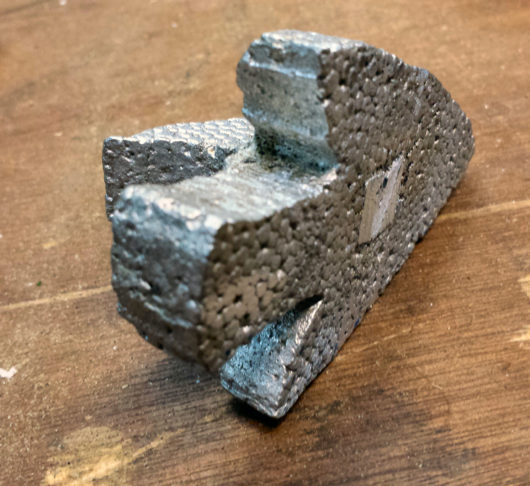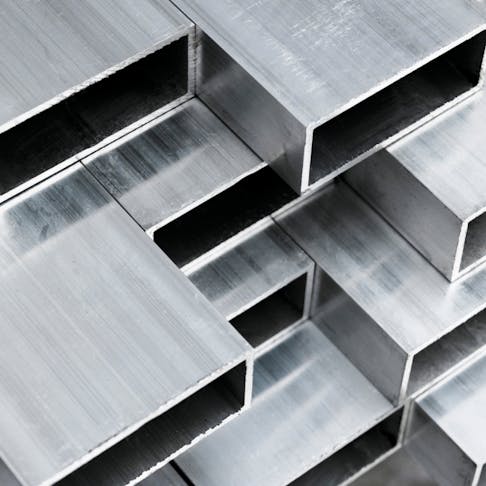How an Aluminum Foundry ensures quality and consistency in every product
Comprehending the Procedures Involved in Aluminum Casting for High-Quality Production
The aluminum casting procedure is a complicated yet vital treatment for achieving high-grade production. It entails several phases, consisting of mold prep work, melting, pouring, and air conditioning. Each step needs mindful interest to information to ensure and avoid flaws uniformity. Comprehending these treatments can significantly influence the end product's stability. As one examines the nuances of mold and mildew selection and cooling strategies, the importance of each element comes to be progressively clear. What factors absolutely determine success in this elaborate process?

The Aluminum Casting Process Overview
The aluminum casting process is a widely made use of production strategy that changes liquified aluminum right into numerous forms and parts. This procedure starts by heating up aluminum until it reaches a fluid state, allowing it to stream easily into mold and mildews. Relying on the wanted final product, various casting approaches can be used, consisting of sand casting, pass away casting, and investment casting. Each approach has its unique advantages and applications, affecting elements such as production volume, dimensional precision, and surface area coating.
When the aluminum is poured into the mold, it solidifies and cools, tackling the shape of the cavity. After cooling down, the actors piece is eliminated from the mold and mildew, commonly requiring extra processes like trimming, machining, or surface area treatment to accomplish the last requirements. On the whole, the aluminum casting process is essential in creating resilient and intricate parts for numerous markets, consisting of vehicle, aerospace, and durable goods.
Preparing the Mold for Casting

Cautious prep work also includes cleansing the mold to get rid of any kind of contaminants that can affect the casting procedure. An extensive inspection assurances that all parts fit together effectively, avoiding imbalances throughout pouring. In addition, applying a release representative can aid alleviate the elimination of the finished item.
Inevitably, precise focus to detail throughout mold preparation establishes the structure for an effective casting procedure, affecting factors such as dimensional accuracy and surface area top quality of the aluminum elements generated.
Pouring and melting Aluminum
Effective melting and pouring of aluminum is vital for attaining premium spreadings. The process begins by selecting the suitable heating system, which must supply reliable warmth transfer and keep regular temperature levels. Numerous kinds of heaters, such as induction or crucible heaters, can be used based on manufacturing needs and volume.
The aluminum must be heated to its melting point, commonly around 660 levels Celsius (1220 degrees Fahrenheit), while making certain very little oxidation and contamination. To improve high quality, ingredients might be presented to improve fluidness and decrease pollutants. When totally melted, the aluminum ought to be held at a stable temperature prior to putting.
Pouring requires precision to avoid problems such as air pockets or incorporations. Making use of putting ladles and controlled putting methods adds to a smooth circulation into the mold. Proper implementation of these steps is crucial for creating spreadings with maximum structural honesty and surface finish.
Cooling and Solidification Techniques
After putting, the cooling and solidification of aluminum play a vital function in identifying the last residential or commercial properties of the casting (Aluminum Foundry). Efficient air conditioning techniques directly influence the microstructure, mechanical residential or commercial properties, and dimensional precision of the end product. Usual techniques consist of required air cooling and water spray, which advertise uniform temperature level circulation and minimize thermal slopes
The solidification process begins as the liquified aluminum loses warm, changing from liquid to solid. The price of cooling affects grain size; slower air conditioning can cause larger grains, possibly lowering toughness. Additionally, using cools-- metal inserts that take in warmth-- can boost cooling prices in particular locations, enhancing overall honesty.
Managed cooling down systems are frequently executed to accomplish wanted properties, such as enhanced ductility or strength, by handling the air conditioning curve. Correct strategies guarantee dependable aluminum spreadings that fulfill stringent industry requirements.
Completing and Top Quality Control Actions
Finishing and top quality control actions are important to guarantee that aluminum castings meet the needed specs and performance requirements. After the casting process, parts go through different ending up operations, consisting of machining, grinding, and polishing. These processes enhance surface quality, dimensional accuracy, and total visual appeals.
Quality control steps play a critical function in ensuring product integrity. Inspection techniques such as aesthetic analyses, dimensional checks, and non-destructive screening are utilized to identify defects like porosity, surface irregularities, or dimensional errors. Additionally, this hyperlink complete documents of each stage of manufacturing assists trace any type of issues back to their resource, allowing constant improvement.
Using statistical process control (copyright) further assurances that production procedures continue to be within defined limits, improving consistency and dependability. By incorporating finishing methods and rigid quality control actions, suppliers can achieve high-grade aluminum spreadings that meet both sector requirements and consumer expectations.
Frequently Asked Concerns
What Sorts Of Aluminum Alloys Are Finest for Casting?
The very best aluminum alloys for casting include 319, 356, and 413, understood for their outstanding fluidness, corrosion resistance, and stamina - Aluminum Foundry. These alloys are typically utilized in auto, aerospace, and numerous industrial applications for long lasting parts
Just How Does Temperature Affect Aluminum Casting Quality?
Temperature substantially influences aluminum casting top quality; higher temperatures can boost fluidness but might bring about oxidation, while lower temperatures enhance information however boost thickness. Accomplishing excellent temperature levels is necessary for balancing these opposite impacts during casting.
What Are Common Defects in Aluminum Castings?
Usual issues in aluminum spreadings consist of porosity, contraction, additions, cool shuts, and surface area roughness. These problems develop from aspects such as incorrect temperature control, contamination, and inadequate mold layout, influencing the end product's honesty and performance.
Can Aluminum Casting Be Recycled?

Exactly How Does Aluminum Casting Compare to Various Other Production Methods?
Aluminum casting deals exceptional design flexibility and product effectiveness contrasted to techniques like forging or machining. visit this site right here Aluminum Foundry. Its capability to produce complex shapes lowers waste, improving total manufacturing effectiveness while preserving top quality criteria in completed items
The aluminum casting process is a facility yet vital procedure for accomplishing top quality manufacturing. The aluminum casting process is an extensively utilized manufacturing technique that transforms molten aluminum right into various shapes and parts. Preparing the mold for casting is a crucial step that directly influences the top quality of the final aluminum item. Finishing and quality control actions are vital to assure that official website aluminum spreadings meet the needed requirements and efficiency standards. Temperature substantially influences aluminum casting high quality; higher temperatures can boost fluidity however may lead to oxidation, while lower temperatures enhance information however increase thickness.